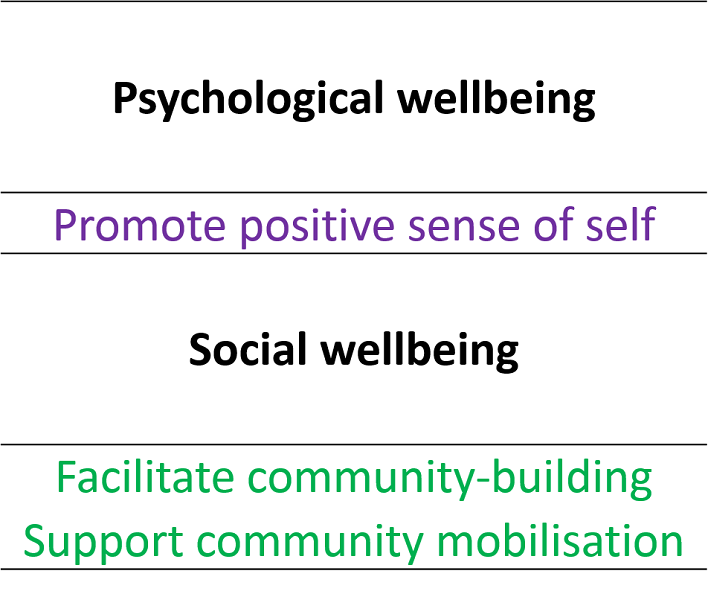Our findings demonstrate that mental-health-related grants align best with only two GCRF Strategic Challenge Portfolios: (i) Global Health, as might be expected, and, more interestingly perhaps, (ii) Cities and Sustainable Infrastructure. Case Study 2 provides an example of how mental health impact has been embedded in the latter portfolio, framed broadly in terms of economic development.
Creating, Connecting and Sustaining Links with the Indonesian Craft Economy
This project is described on the Gateway to Research as bringing together “rural craft producers, fair trade businesses and design researchers in Indonesia to explore opportunities, to develop new networks, build long term partnerships and support innovation” (para 1). It is anticipated that “(t)hese initiatives will improve employment opportunities in rural areas, encourage pride in local culture, improve rural incomes and reduce pressures of migration towards cities” (para 3). Other producers “will also gain by meeting diverse craft practitioners which may stimulate thinking about new product possibilities that combine diverse skills […] building ‘linking’ and ‘bridging’ social capital” (para 8). Hence, the target groups of this project which could be the focus of psychosocial wellbeing impacts were identified by the coders as craft producers, women, and lower socio-economic groups.

PSYCHOSOCIAL WELLBEING
One coder noted that, although framed very much as economic, the project engaged implicitly with the psychosocial wellbeing of target groups through assisting craftspeople to develop self-esteem and ability to project oneself and one’s products. The other coder drew attention to implicit psychosocial wellbeing impact of valuing local identity and culture. Both agreed that, had only minor changes been made to the project, there were opportunities to promote positive sense of self, facilitate community-building, and support community mobilisation of target groups. To do so, one coder suggested that the researchers could have asked questions about confidence, mutual support, and collaboration. The other coder suggested that benefits to wellbeing through increased financial security, valuing of local identity, and social cohesion could have been stated more explicitly. However, they also noted how this small grant was already achieving a lot and would likely have needed some additional resource to adequately monitor psychosocial wellbeing impact, although their in-country partner organisations may have been already observing such benefits.

MATERIAL PRACTICES
In terms of material practices, both coders agreed that objects and people might have created a focus to enhance psychosocial wellbeing with target groups. It was suggested that craft objects could be the focus for mutual celebration of creativity while it was noted that these were already being used to increase sense of local pride in heritage. It was also suggested that there were massive possibilities for promoting understanding and empathy for migrant communities and, whilst enhanced social cohesion likely occurred, this could have been observed and discussed.
